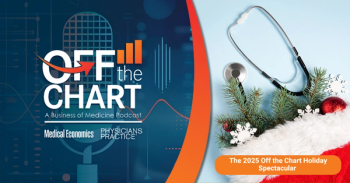
Artificial intelligence will play a part on the diagnostic team of the future
Researchers propose framework for AI moving beyond just a tool that physicians use.
Artificial intelligence (AI) and machine learning (ML) are poised to make the leap
The U.S. Agency for Healthcare Research and Quality published
Physicians and other clinicians already recognize the importance of a team-based approach with each other, patients, and their families to reduce diagnostic errors, the report said, citing the National Academy of Medicine.
The team will get a new member, creating “a tridirectional exchange among patients, clinicians, and AI that is not typically seen with tools and technologies used in health care,” the report said.
“Rather than viewing AI as a diagnostic tool to be wielded by human agents, we view it as a member of the diagnostic team capable of understanding, interpreting, reasoning, relating, responding, and ultimately collaborating with clinicians and patients in the diagnostic process,” the authors said.
Three dyads and a triad
The report outlines three dyads: patient-clinician, patient-AI, and clinician-AI.
The patient-clinician dyad is central to successful diagnoses, although not all patients have access to clinicians. The authors noted an example is “inadequate access to primary care.”
The patient-AI relationship stems from increasing use of wearable devices and better sensors in devices such as smart phones, watches, and fitness bands. Some of it marketed directly to consumers, with benefits and drawbacks that clinicians must address as liaisons in that relationship.
The clinician-AI dyad will grow as AI processes, organizes, and transforms patient data into actionable knowledge. Clinicians can get better information about patient health, but the data won’t make a difference if they are not integrated into clinical care effectively, the report said.
“Numerous research questions need to be addressed and implementation challenges need to be overcome,” the report said.
Together, the dyads working together will form a patient-clinician-AI (PCA) triad.
Core principles
The authors recommended including AI as a member of the diagnostic team with team-based principles suggested by the Institute of Medicine.
- Shared goals, with team goals built on the foundation of the patient’s values, preferences, and circumstances.
- Clear roles that preserve patient and clinician autonomy, while recognizing AI will have variable levels of autonomy based on the diagnostic problem.
- Mutual trust. The researchers noted establishing trust in AI is an area of active research. Clinicians will need skills to evaluate AI-based diagnostic systems and make recommendations about using them.
- Effective communication. Developers and anyone implementing AI should consider usability because patients and clinicians are not likely to engage with technologies that disrupt their lifestyle or clinical workflow.
- Measurable processes and outcomes. Patients and clinicians may address PCA team functionality in follow-up visits, portal communications, or discussions with other members of the health care team. Clinicians also should be comfortable discussing AI performance with health system administrators.
Newsletter
Stay informed and empowered with Medical Economics enewsletter, delivering expert insights, financial strategies, practice management tips and technology trends — tailored for today’s physicians.








